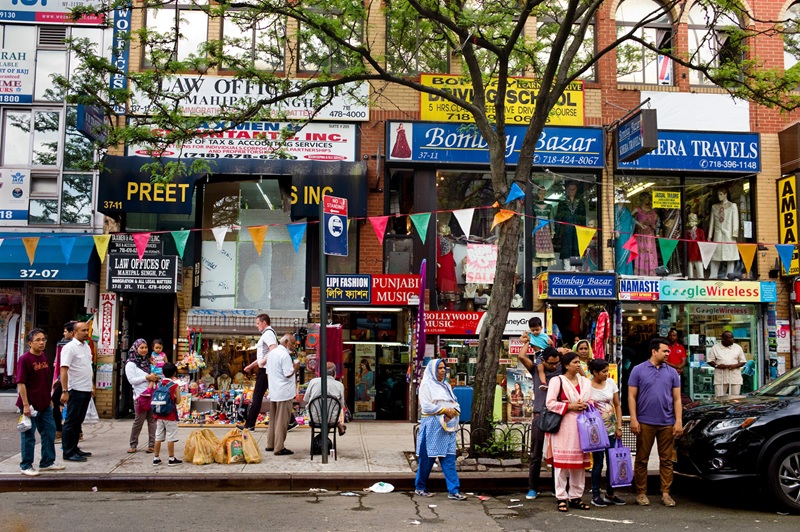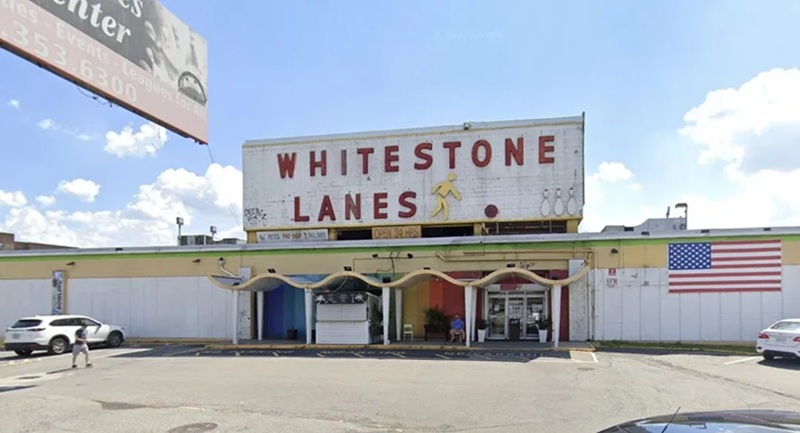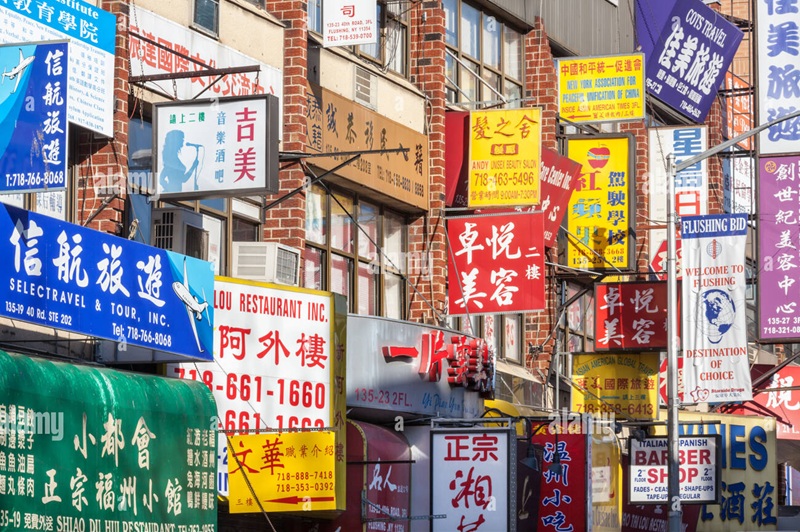
Located in the northwestern part of Queens, Jackson Heights is one of the borough’s most eclectic and dynamic neighborhoods. Known for its rich cultural diversity, vibrant community, and distinctive historic architecture, Jackson Heights has become one of the most desirable areas in New York City. With its combination of quiet residential streets, bustling commercial hubs, and excellent transportation options, Jackson Heights has long been an attractive destination for families, young professionals, and newcomers alike.
Location and Accessibility
Jackson Heights is situated in the heart of Queens, bordered by Elmhurst to the west, Corona to the north, and East Elmhurst to the east. To the south, it is bordered by the LaGuardia Airport area, making it easily accessible to both New York City’s major airports and the rest of the boroughs.
The neighborhood’s prime location offers easy access to transportation. Jackson Heights is a transportation hub, with multiple subway lines converging at the Jackson Heights-Roosevelt Avenue station. The 7, E, F, M, and R subway lines provide fast and convenient access to Manhattan and other parts of Queens, making commuting straightforward and efficient. In addition, several bus routes pass through the neighborhood, offering additional connectivity.
The neighborhood’s location also makes it an ideal place for those working in Manhattan, with quick and easy subway access allowing for a short commute into the city’s heart. The area is also well-served by taxis, ride-sharing services, and bike lanes, contributing to its accessibility.
A Cultural Melting Pot
Jackson Heights is one of the most culturally diverse neighborhoods in all of New York City, with a rich history of immigrant communities. The neighborhood is home to people from a wide variety of ethnic backgrounds, including large communities from South Asia, Latin America, and Eastern Europe, as well as long-time Italian and Irish-American residents.
This cultural mix is reflected in Jackson Heights’ vibrant street life, local businesses, and community events. Whether you’re craving authentic Indian cuisine, Colombian arepas, or Filipino lumpia, Jackson Heights offers an unparalleled array of food and shopping experiences. The diversity is most apparent along Roosevelt Avenue, the neighborhood’s bustling commercial corridor, where you’ll find a colorful mix of restaurants, cafes, markets, and shops selling everything from traditional spices to handcrafted jewelry.
The neighborhood also celebrates its multiculturalism through festivals and events. The annual Jackson Heights Diversity Festival is one such event, where residents and visitors come together to celebrate the area’s rich cultural heritage through music, dance, food, and performances.
Architecture and Residential Life
Jackson Heights is also known for its distinctive and historic architecture. The neighborhood features a combination of charming low-rise buildings, garden apartments, and pre-war co-ops. Much of the residential area is composed of art-deco-style buildings, colonial-style homes, and garden apartment complexes, particularly in the Jackson Heights Historic District, which was designated in 1993. These buildings were constructed in the early 20th century when the neighborhood was first developed and reflect a unique aesthetic that sets Jackson Heights apart from other areas in the city.
The residential streets of Jackson Heights are often tree-lined and quiet, offering a suburban feel in the middle of the city. The neighborhood is popular with families and those seeking more space than is typically available in more central urban areas. Many of the co-op buildings and apartments have lush courtyards and communal garden spaces, creating a sense of community among residents.
The housing market in Jackson Heights has experienced steady growth over the past several decades, driven by the area’s central location, growing desirability, and continued development. While housing prices have risen as the neighborhood’s popularity has grown, Jackson Heights still offers relatively affordable housing compared to some of the more expensive neighborhoods in Manhattan and western Queens.
Green Spaces and Recreation
While Jackson Heights is primarily an urban neighborhood, it is not without its green spaces. Travers Park, located in the heart of the neighborhood, is one of the most popular outdoor spaces in the area. The park features a playground, sports courts, and a wide-open space for relaxation and community events. Travers Park is also home to the Jackson Heights Greenmarket, which runs year-round and offers fresh produce, artisanal goods, and local products, contributing to the neighborhood’s community spirit.
Nearby, Flushing Meadows-Corona Park, one of New York City’s largest parks, is just a short distance away and offers even more recreational opportunities. With playgrounds, walking paths, sports fields, and the iconic Unisphere, the park serves as an important green space for Jackson Heights residents.
Additionally, the Queens Botanical Garden, located a bit further to the northeast in Flushing, provides a tranquil escape with beautiful gardens and horticultural displays, making it another destination for those in the neighborhood seeking a natural respite.
Education and Community Life
Jackson Heights is served by School District 30, which includes a number of highly regarded public and charter schools. The area is home to several elementary and middle schools, and it is also close to high schools in surrounding neighborhoods. In addition to public education, there are a variety of private and parochial schools in the area, offering diverse options for families.
The neighborhood has a thriving community life, with numerous community centers, churches, and cultural institutions that serve its residents. Jackson Heights also offers a wide variety of fitness centers, yoga studios, and recreational programs, reflecting the neighborhood’s focus on healthy living and wellness.
In addition, the local Jackson Heights Beautification Group works to keep the neighborhood clean, organize community events, and advocate for the neighborhood’s improvement and development.
Real Estate and Market Trends
As Jackson Heights continues to grow in popularity, the real estate market has remained competitive. The area’s residential buildings, particularly its historic co-ops, are attractive to a range of buyers, from young professionals seeking a quiet community close to Manhattan to families looking for more space and a strong sense of neighborhood.
With the neighborhood’s continued development, new apartment buildings and mixed-use developments have been constructed, introducing modern amenities and luxury features while respecting the area’s historical character. However, Jackson Heights still offers relatively affordable housing compared to neighboring neighborhoods, which makes it an attractive option for those who want to live in a vibrant, central location without paying the premium of other areas in Queens.
The Future of Jackson Heights
The future of Jackson Heights looks bright, as the neighborhood continues to grow and develop while preserving its cultural diversity and historical charm. As more people discover the area’s unique mix of residential comfort, convenience, and vibrant community life, demand for housing and retail spaces is expected to rise, driving further investment in the neighborhood. This growth is likely to bring more businesses, cultural institutions, and amenities to Jackson Heights, enhancing its reputation as one of New York City’s most diverse and exciting neighborhoods.
Conclusion
Jackson Heights, Queens, offers the best of both worlds: a dynamic, diverse neighborhood full of history and character, with modern conveniences and easy access to Manhattan. Whether you’re drawn to its rich cultural heritage, its beautiful architecture, or its family-friendly vibe, Jackson Heights has something to offer everyone. As it continues to evolve, the neighborhood remains a quintessential part of Queens’ diverse fabric, making it one of New York City’s most vibrant and desirable places to live.

